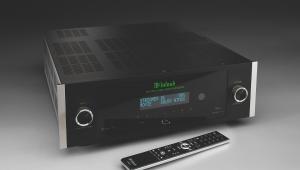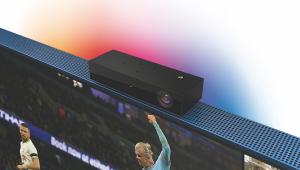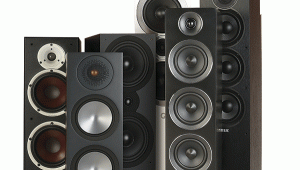Room correction and EQ is a tremendous thing, but are we in danger of losing the personal touch?

The sound I’m hearing is one I’ve honed and tweaked over time. It’s close enough to 'neutral' to make testing equipment a practical proposition, but it’s one that also reflects the listening experiences of your common or garden UK lounge. Importantly, it also allows for the slight but noticeable character of the electronics and speakers themselves to be perceived as part of the performance.
The very idea of this is anathema to some. The target is a 20Hz-20kHz frequency response as flat as a relief map of a snooker table, reproducing the feed from the mastering desk. And EQ and correction are means of getting closer to this ideal.
A phase I'm going through
I don’t have a downer on room correction. Even
a simple 5.1 system could have 12 drivers and
a veritable Bletchley Park of phase calculations. Furthermore, room correction software has become more ‘light touch.’ Early iterations could iron out some limitations of your room, but did so with the subtlety of a Tony Scott film. Recently, I've encountered EQ systems that are genuinely impressive in their delicacy and transparency. Real progress is being made.
But… fundamental to this process is that the systems tend to correct both the issues they find in the room and detail deviations from a true baseline that are inherent in your equipment, because they don’t differentiate between the two. If you happened to rather like those little deviations, that’s an issue because the EQ robs your equipment of its character; and I use the word deliberately because one person’s ‘character’ is another person’s ‘flaw.’
Most systems – two-channel and multichannel – now allow for a degree of bypass, particularly with stereo listening. But I’ve noticed that the manner in which this is accessed on devices is becoming more arcane, and for products where there might also be streaming and decoding on board, it’s harder to establish how ‘direct’ the direct settings are. You can argue that the crossover between someone using their AVR as a one-stop shop and someone like myself who’s digital front-end is five boxes (NAS, Roon Core, streamer, upscaler and DAC) is not high and we want different things, but I’d counter that it’s not that straightforward.
Love is in the air
The reason for this is that the harmonising of
our user experiences makes it harder to determine what we actually love; what it is about serious audio hardware that worms its way past the boring reasoning part of the brain and taps into the primal bit. The best products I’ve reviewed over the years are the ones that result in me generating precisely
no notes after hours of listening because my brain has demanded I sing along, punch the air and generally emote towards the music.
In a world where everything has been tweaked, tucked and rounded, that intensely personal feeling risks being harder to find, knocked into second place by a setup algorithm. Yes, the benefits of being able to dial in complex systems (or even a pair of speakers that can’t be optimally placed) are enormous, but I don’t want to lose the magic of a system that's been set up to work in your space, for you.
 |
Home Cinema Choice #351 is on sale now, featuring: Samsung S95D flagship OLED TV; Ascendo loudspeakers; Pioneer VSA-LX805 AV receiver; UST projector roundup; 2024’s summer movies; Conan 4K; and more
|






















































